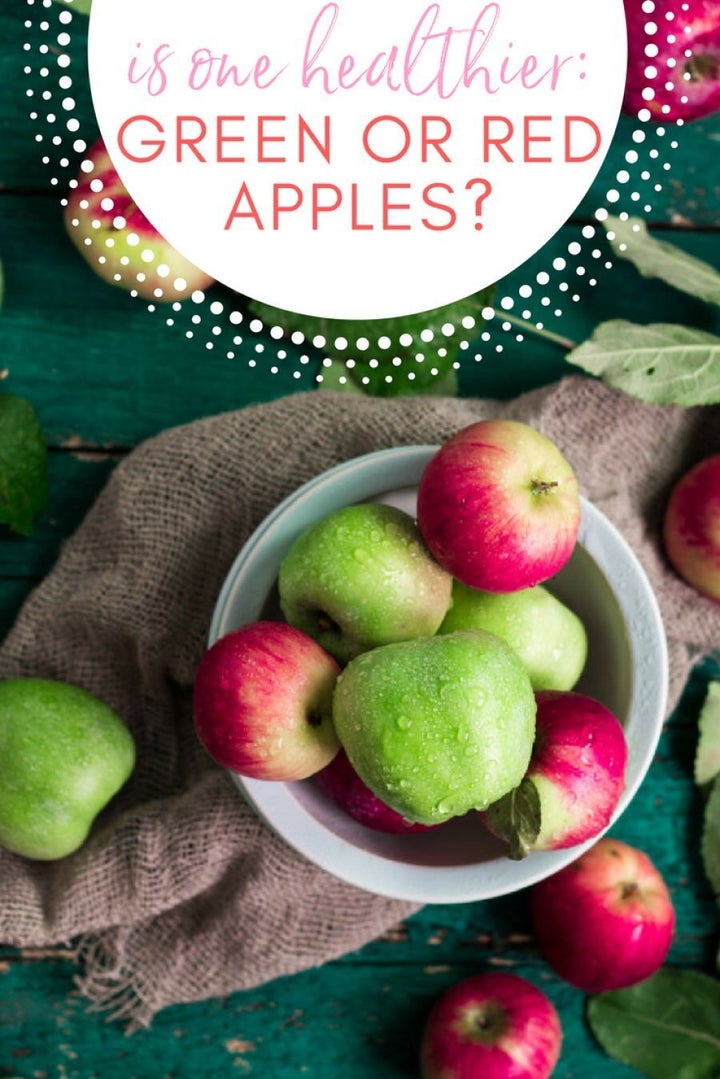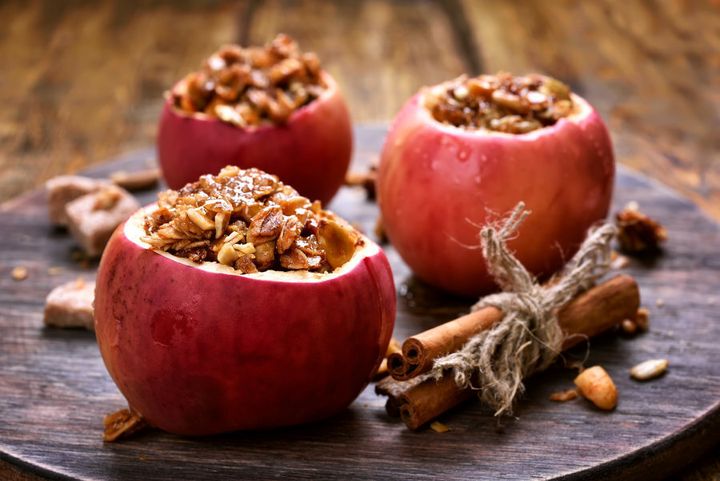Much like the "rinsing dishes before placing them in the dishwasher" debate, the question of "red apples vs green" divides many. Those on the green apple train love the crispy tartness and thicker skin. While red apple fans appreciate the sweetness and juiciness.
But from a nutritional perspective, is there a difference between red and green apples?
The answer is yes, a little.
First, let's take a look at why these little fruits are so nutritious and worth eating.
"Apples are rich in antioxidants, pectin, quercetin and flavonoids to protect our cells from oxidative damage," nutritionist Fiona Tuck told HuffPost Australia. "They are particularly good for heart, bowel and liver health and make an easy to carry, tasty snack.
"Apples are high in fibre (which is good for our gut health) and also a soluble fibre called pectin, which is good for heart health as it helps to lower LDL (the bad) cholesterol."
Fruit provides fibre which is essential for heart, gut, liver, hormone and heart health, and contains a variety of important vitamins and minerals that are essential for health and wellbeing.
The apple's assortment of antioxidants and flavonoids such as quercetin help to support healthy ageing and may help to protect cells from damage and disease.
"They're also a source of potassium, phosphorus, calcium, manganese, magnesium, iron and zinc. Apples also contain vitamins A, B1, B2, B6, C, E, K, folate and niacin," Tuck said.
"A medium-sized apple contains approximately 25 grams of carbs, the majority of the carbohydrate content coming from fructose, a naturally occurring fruit sugar."

As for which variety is "healthier", each has their own nutritional benefits. For those being careful of their carb and sugar intake, green apples come out on top. But the difference isn't huge.
"The health benefit differences are negligible. However, green apples may contain slightly more fibre and less carbohydrates and sugar than red apples," Tuck said.
If antioxidants are your focus, then red apples win. Again, the difference is small.
"Red apples contain higher amounts of anthocyanins which are found in the red skin, which offer antioxidant and anti-inflammatory benefits."
Obviously, more important than the red versus green apple debate, or any slight nutritional difference between the two apple varieties, is that we actually eat them -- along with an array of other delicious fruits and veggies.
"Fruit provides fibre which is essential for heart, gut, liver, hormone and heart health, and contains a variety of important vitamins and minerals that are essential for health and wellbeing," Tuck told HuffPost Australia.

"Aim for a couple of pieces of fruit a day and approximately 6–7 servings of vegetables. Include different fruits and vegetables in the diet daily to ensure a variety of different nutrients.
"Apples do tend to be one of the most highly sprayed fruits (pesticides), so wash thoroughly before eating or, if possible, choose to eat organic apples."
If you're bored of eating plain apples, transform them using these delicious tricks.
"Take the core out of a whole apple, stuff with a mixture of dried fruits (such as prunes, sultanas, cranberries), cinnamon and chopped walnuts and bake in the oven. Top with natural yoghurt for a delicious healthy dessert or breakfast," Tuck said.
"You can also cut an apple into slices and spread with nut butter for a tasty snack. Or stew apples with a little honey and cinnamon, and add to porridge for a heart healthy breakfast."
Click below to subscribe to the Refresh podcast by HuffPost Australia on iTunes.

ALSO ON HUFFPOST AUSTRALIA
